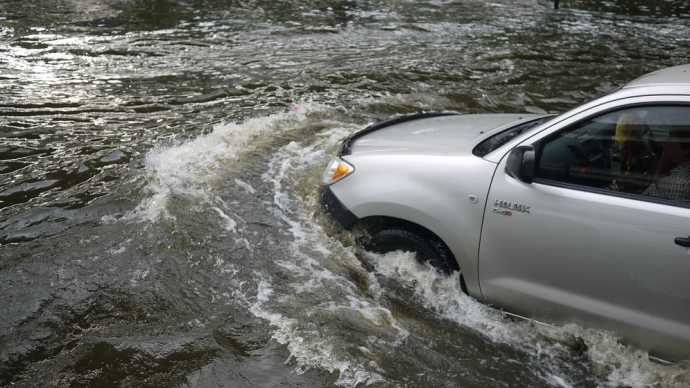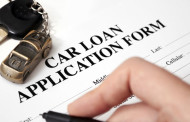Here are some flooding facts and some tips on what to do if you find yourself faced with this frightening highway hazard while behind the wheel:
Don’t drive into a flooded area if you can avoid it
The first rule of driving in flooded waters is, DON’T. Find another route. That’s the only sure way to avoid getting stranded.
When approaching a flooded area, you can’t be sure of the depth of the water or the condition of the road beneath it, which may be broken up or washed away.
- Worst case, there may be no road left under the water.
- Just 15 cm (6 inches) of standing water – sometimes less – can be enough to cause engine stalling. Your engine can suffer serious and expensive damage if it ingests water. And you’ll be stranded.
- In approximately 30 cm (1 foot) of water, a typical car can begin to float and, as traction is lost, so is steering control. If the water is moving, your vehicle could literally float away.
- At 60 cm (two feet) of water, even larger vehicles such as pickup trucks and SUVs are in danger of floating away.
- NEVER try driving through fast-moving water, such as an overflowing river, as your vehicle could be swept away.
- As a rule of thumb, don’t drive into water that’s too deep to see the painted markings on the road.
If you can’t avoid a flooded area and have to drive through it
Sometimes the flood water comes to you rather than the other way around or you have no alternative route available and you have to drive through it. When that happens, here are some precautions to take.
When approaching a depth of standing water on a road, always slow down before entering it. Even a very shallow depth of water can cause aquaplaning if entered at speed. The tires effectively lose contact with the road, resulting in a loss of steering control.
If there are other vehicles around, watch what happens to them as they drive through the water. Doing so will help you judge its depth and how it affects the vehicle as well as warn of any hidden hazards beneath the surface.
- Proceed into the water very slowly and maintain a steady pace so as not to lose momentum. If you go too quickly you risk losing steering control. If you go too slowly, you run the risk of getting stuck.
- Do not drive into water where downed power lines have fallen as electric current can be conducted by water.
- Be particularly cautious entering a flooded area at night as it is much more difficult to identify potential hazards.
- Be considerate of others. Driving through water at speeds above a slow crawl can create a splash that inhibits the visibility of other drivers and soaks pedestrians or people trying to direct traffic.
- Be on the lookout for debris or other items that may float into your path.
- Once you are through the flooded area, be aware that your brakes will be wet and will not function normally until they are dried out. Light brake applications will help them dry out and warm up more quickly.
If you should become stranded
In spite of your best efforts, conditions can change quickly and you may find yourself stranded. There is never one best course of action to cover every circumstance so analyze the situation and make the best choice you can. Here are some things to consider.
- If your engine stalls and doesn’t quickly restart, do not continue to try as doing so may cause further and more serious damage.
- It’s important to keep the situation from getting worse, so turn on your hazard warning lights to make sure other drivers can see you.
- Use your cell phone to call for help.
- If you can safely make it to higher ground on foot, leave the vehicle and do so. Be cautious of other traffic around you.
- If it seems unsafe to leave the vehicle, stay with it. If the water level becomes too high inside, you may want to climb onto the roof to await assistance.
Whatever the circumstance, keep calm and think through the best course of action and its consequences.
The best advice of all, however, is simple. Do not to drive in flooded road conditions if at all possible.








